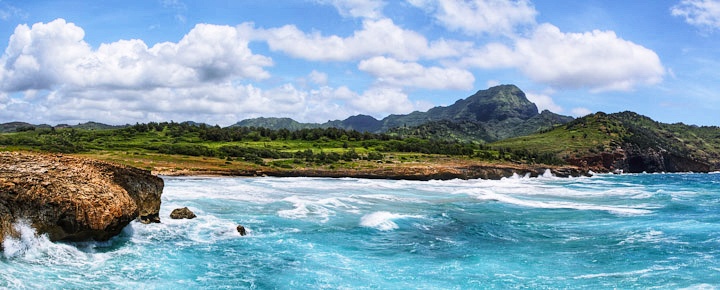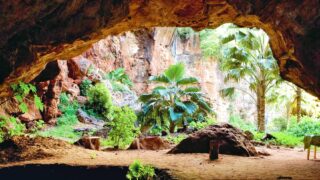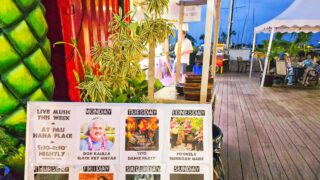After a wave of public outcry and intense media scrutiny, Kauai’s Makauwahi Cave Reserve will, surprisingly, soon reopen to the public. The historic site, recently closed by its billionaire land owner’s company, had faced an uncertain future amid fears of neglect and commercial development. This followed the announcement that the long-term lease held by Dr. David and Lida Burney since the 1990s had ended.
However, the power of the people’s voices still matters. Despite big money interests, this beloved Poipu landmark will remain accessible, reaffirming community perseverance in preserving its unique cultural and ecological heritage.
Here on Kauai, news travels fast—especially when it’s about one of Poipu’s best-kept secrets, the historic Makauwahi Cave Reserve. After extensive media coverage and an outpouring of public concern, billionaire Steve Case’s Grove Farm has announced that they will soon reopen public access to the site.
The cave, beloved by locals and visitors alike for its ecological and cultural significance, had recently closed, sparking fears of neglect and potential development. But thanks to public pressure, the community’s voice has prevailed, reaffirming that the people of Kauai can make a difference in preserving the island’s heritage.
Questions around transparency and miscommunication.
While the reopening of Makauwahi Cave Reserve is being celebrated, questions continue regarding the entire sequence of events that led to the closure. Some residents and stakeholders, including Grove Farm, have raised concerns that the situation may have been misrepresented in the Burneys’ grant application for funding to the U.S. Navy and in public statements.
The Burneys had reportedly applied for a substantial grant to develop a bird sanctuary at Mahaulepu, while landowner Grove Farm may not have been included in the process. As Grove Farm clarified, the application was submitted with the apparent implication of a long-term lease agreement, even though the Burneys were always operating under a month-to-month arrangement. This discrepancy led to the grant’s denial.
Additionally, some feel that public statements may have unintentionally escalated concerns. The Burney’s announcement of the cave’s “indefinite closure” raised fears of commercial development, whereas Grove Farm’s statements were otherwise. These still unfolding details remind us that the full picture is often more nuanced. The Burney’s also appear to contend that their lease was not month-to-month previously, but was long-term.
Mixed messages and clearing the air on Grove Farm’s intentions.
Until recently, many believed Grove Farm had effectively shuttered Makauwahi Cave Reserve, which led to questions about whether the land would be redeveloped. However, Grove Farm’s new information suggests a more complex story behind the closure.
According to Don Horner, Grove Farm’s CEO, the company has committed to reopening the reserve and plans to protect nearly 7,000 acres along the Mahaulepu coastline, including the cave. Horner explained that Grove Farm aims to secure a sustainable stewardship model to keep the land accessible to the public while exploring its potential as an educational resource for Kauai’s youth. “We want to ensure this resource continues to benefit the community,” Horner emphasized.
However, questions remain about Grove Farm’s specific involvement, the recent grant issues raised, the sudden shift in long-term management, and more.
The backstory: a legacy in limbo.
Dr. David Burney and his wife, Lida, managed Makauwahi Cave Reserve on a month-to-month lease from Grove Farm for over two decades, according to Grove Farm. The Burneys transformed the cave into an internationally recognized “living museum” with archaeological and ecological importance, including the only known fossil site in Hawaii with sedimentary layers said to date back 10,000 years.
Through their nonprofit organization, the Burneys curated a rare native plant garden, provided educational tours, and created an ecosystem that featured “nature’s lawnmowers”—tortoises used to control invasive plant species.
This year, Dr. Burney applied for a grant from the Department of Defense to develop a bird sanctuary at Mahaulepu without Grove Farm’s participation. Initially interested in funding this effort, the Navy eventually withdrew the grant due to feasibility concerns.
Additionally, Grove Farm was informed that Burney’s application implied a long-term lease, leading to misunderstandings that may have culminated in the Burneys stepping away from managing the site entirely.
Upon ending their lease, the Burneys posted signs indicating an indefinite closure, which fueled public concern over Grove Farm’s intentions and led to concerning speculation. “We’ve dedicated years to this reserve. Seeing it neglected is devastating, especially when we know what it takes to keep it thriving,” said longtime volunteer Jennifer De Grassi Williams.
Reopening plans for Makauwahi Cave and what’s next.
In response to the public outcry, Grove Farm has committed to reopening Makauwahi Cave Reserve as soon as new staff can be trained and placed. The company has shared that it is seeking personnel to resume regular operations and hopes to bring back educational programs, including school field trips—a hallmark of the Burneys’ prior work that inspired countless students and visitors.
The exact timeline remains uncertain, but Horner reassured the community that Grove Farm has no plans for development in this area. “We’re committed to preserving this site,” he stated, addressing concerns that the land might be repurposed or commercialized.
Kauai community reaction and cautious optimism.
While Grove Farm’s response has provided relief, some in our community remain watchful. For many, the announcement to reopen Makauwahi Cave Reserve is only a partial reassurance, and questions still loom over how the site will be managed in the long term. The quick shift from closure to reopening raised some eyebrows, with community stakeholders curious if public opinion alone was the driving factor behind this decision.
Kauai resident and conservation advocate figaro0314 captured this mixed sentiment: “If Grove Farm is serious about preservation, they should involve the community in their planning. We deserve transparency.”
Others echoed this, emphasizing the need for Grove Farm to work closely with the Kauai community to ensure ongoing public access and protection of the reserve’s fragile ecosystem.
A pattern of preservation: from lessons at Mahaulepu to limits at Coco Palms.
The apparent victory for Makauwahi Cave Reserve is not an isolated case on Kauai. In recent years, community-led efforts have played a pivotal role in protecting the island’s environment from potentially disruptive developments.
A similar example emerged when billionaire Pierre Omidyar proposed a large-scale dairy farm near Mahaulepu. Local opposition was swift and resolute, and conservation groups like Friends of Mahaulepu voiced concerns over environmental impacts, including pollution and risks to groundwater.
The community’s vocal resistance, among other things, ultimately led to the project’s withdrawal. As with the Makauwahi Cave Reserve, Kauai residents and repeat visitors stand reminded of their power to influence decisions that could impact the Garden Island’s future.
However, not every preservation effort has succeeded. Despite significant public opposition, the redevelopment of the historic Coco Palms Resort, damaged by Hurricane Iniki and left abandoned for decades, is moving forward. This project highlights the limitations of community influence, as state, county, and private interests have continued to back its resurrection despite widespread vocal concerns.
These examples underscore a critical message in Hawaii: while collective action can influence decisions, challenges remain. The people of Kauai have repeatedly shown their commitment to preserving their island, but the successes are part of an evolving journey. For every victory like Makauwahi Cave or Mahaulepu, other projects like Coco Palms remind us of the complexities of balancing public interests vs. private development.
Community power may be greater than expected in preserving Kauai’s legacy.
The Makauwahi Cave Reserve’s reopening is a significant victory for those who value public access to Hawaii’s historical and natural landmarks. Grove Farm’s rapid shift illustrates how collective action can drive change, especially when it comes to preserving Hawaii’s most cherished sites. For many residents, the cave represents more than an archaeological wonder; it is a testament to Kauai’s rich cultural and ecological past.
As local conservationist Candice Myhre noted, “This place belongs to all of us. It’s up to us to ensure that places like this are preserved for future generations.”
Her sentiment reflects a common perspective across the islands, where local communities often need to guard against commercialization and protect cultural assets from the pressures of private interests.
Makauwahi Cave Reserve may be one relatively small site among many in the islands, but its reopening reaffirms a powerful message: with active community engagement, even large landowners can be encouraged to honor the people’s will regarding Hawaii’s natural and cultural legacy.
Please share your thoughts!
Get Breaking Hawaii Travel News







There is no mention in this story about the unique and invaluable scientific study of Dr. Burney in this rare limestone cave. What about the science?
Can anyone explain why the US Navy would be funding a bird sanctuary on Kauai?
Sounds like a misuse of taxpayer funds.
Gee, let me say off the top of my head, why are you faking being surprised that the Federal Government and the DOD/Navy ever misuse money?! I think for several reasons why the DOD/Navy should support a bird sanctuary and do so anywhere. One, its being a good neighbor. Two, it’s progressive-climate change and human irresponsibility contribute to the destruction of wildlife habitat. Any and all efforts to help wildlife continue to thrive should be on the top of any agency’s budget.
This is great news! I hope the tortoises will be allowed back, too!
The tortoises were stolen. Not coming back.
Good to hear the cave will remain accessible.
What of Kāneiʻolouma Heiau. I was there not long after it was cleared, and it was quite a site. The last I was there it was starting to become overgrown again. This, too, could use some public love.
Not a huge fan of going into a cave that black widows,brown widows, and hopping venemous spiders can live.
Two points…
If it’s not public land, the public does not have free reign and access to improve or vandalize or do anything else they feel they have the right to do. Period. Grove Farms bought the land from the prior owner, who obviously owned it and had the right to sell if they wished. If the Kauai locals feel so strongly about wanting to preserve it, have them pony up and buy the cave property for the public! Where was their urgency for preservation back when the caves were being vandalized?
Second, with the US debt growing every day, why is the Dept of Defense considering doling out “grants” to make it a bird sanctuary? Every tax $ I pay that goes to defense spending, better dang we’ll be used for that and nothing else! I’m not suggesting that a bird sanctuary is a bad idea, just the source of funding attempted sure seems wrong to me! I don’t know what kind of exotic trees they were able to plant there, but back home, money still doesn’t grow on trees!
Whew! A sigh of momentary relief. Please keep us informed. Thank you
Wow! I sure didn’t expect this to happen. I was first at the site when students from UH were doing research. A handful of students invited me to crawl through that cave. What an experience! I’m so glad others will be able to see this amazing site.
Thank you for your great reporting.
I’m a bit confused. I was at the preserve and cave on October 29 and there was no sign of any closure. We walked in from the ocean side, and explored the grounds and cave. Many others were visiting. A gentleman had tables and info at the cave and was chatting with visitors. Other than the absence of tortoises it appeared to be quite open. Maybe there’s another entrance that was blocked somewhere?
It was originally set to close November 1st. I don’t know what it is like there now though.